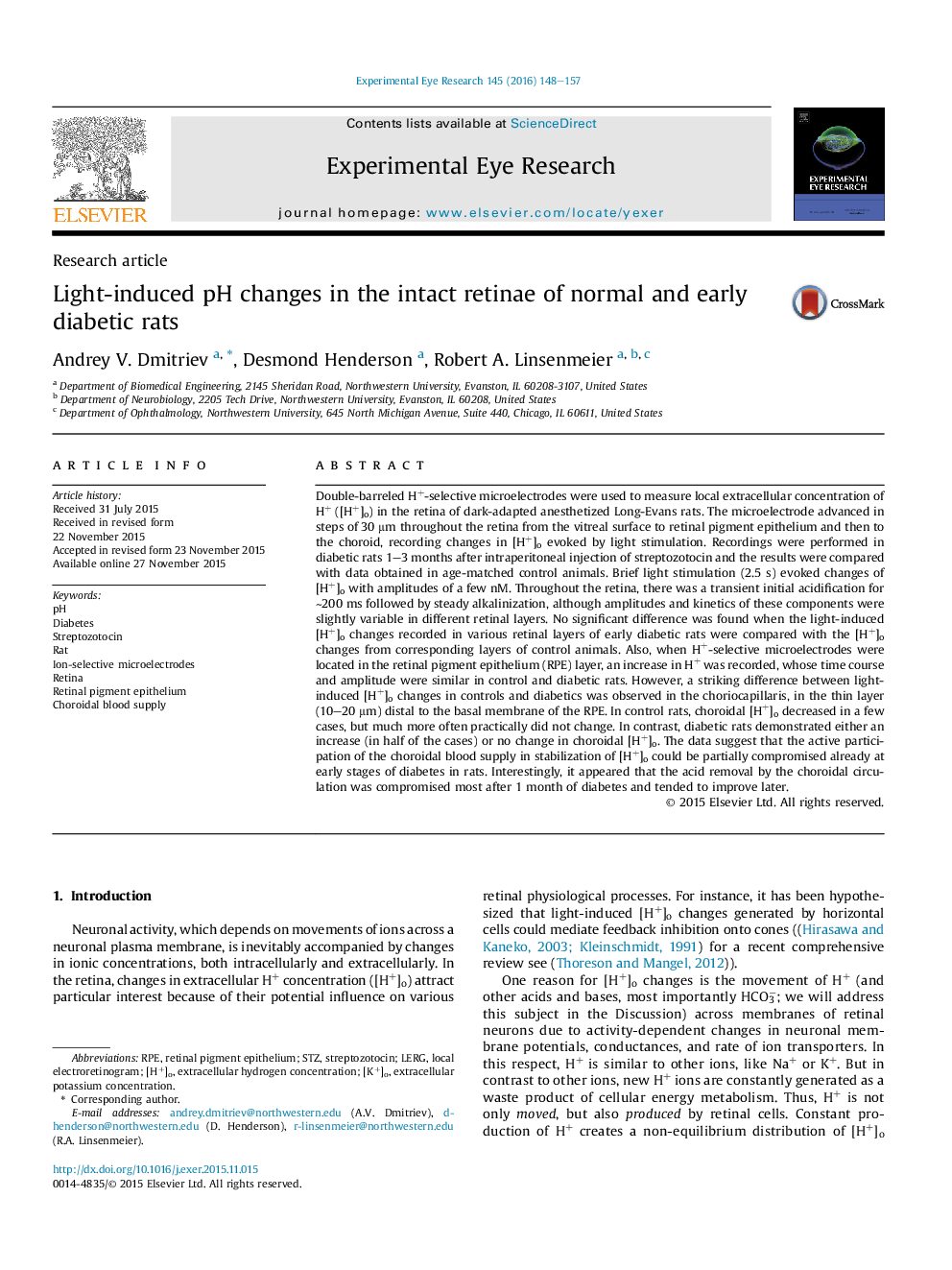| Article ID | Journal | Published Year | Pages | File Type |
|---|---|---|---|---|
| 6196459 | Experimental Eye Research | 2016 | 10 Pages |
â¢Light-induced pH changes in the intact rat retina were measured by microelectrodes.â¢In the retina, pH changes were not much different in control and early diabetic rats.â¢In the choroid, pH changes were different in control and early diabetic rats.â¢Evacuation of retinal H+ by the choroid appears to be compromised in early diabetics.
Double-barreled H+-selective microelectrodes were used to measure local extracellular concentration of H+ ([H+]o) in the retina of dark-adapted anesthetized Long-Evans rats. The microelectrode advanced in steps of 30 μm throughout the retina from the vitreal surface to retinal pigment epithelium and then to the choroid, recording changes in [H+]o evoked by light stimulation. Recordings were performed in diabetic rats 1-3 months after intraperitoneal injection of streptozotocin and the results were compared with data obtained in age-matched control animals. Brief light stimulation (2.5 s) evoked changes of [H+]o with amplitudes of a few nM. Throughout the retina, there was a transient initial acidification for â¼200 ms followed by steady alkalinization, although amplitudes and kinetics of these components were slightly variable in different retinal layers. No significant difference was found when the light-induced [H+]o changes recorded in various retinal layers of early diabetic rats were compared with the [H+]o changes from corresponding layers of control animals. Also, when H+-selective microelectrodes were located in the retinal pigment epithelium (RPE) layer, an increase in H+ was recorded, whose time course and amplitude were similar in control and diabetic rats. However, a striking difference between light-induced [H+]o changes in controls and diabetics was observed in the choriocapillaris, in the thin layer (10-20 μm) distal to the basal membrane of the RPE. In control rats, choroidal [H+]o decreased in a few cases, but much more often practically did not change. In contrast, diabetic rats demonstrated either an increase (in half of the cases) or no change in choroidal [H+]o. The data suggest that the active participation of the choroidal blood supply in stabilization of [H+]o could be partially compromised already at early stages of diabetes in rats. Interestingly, it appeared that the acid removal by the choroidal circulation was compromised most after 1 month of diabetes and tended to improve later.
